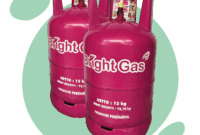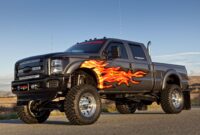The Powerhouse on Wheels: Navigating the Market for Log Trucks with Loaders for Sale cars.truckstrend.com
In the demanding world of timber harvesting, efficiency is king. Every minute saved, every extra log moved, directly impacts the bottom line. This is where the log truck with loader emerges as an indispensable asset. More than just a vehicle, it’s a self-sufficient mobile unit designed to streamline the entire logging process, from the felling site to the mill. By integrating the transport and loading functions into a single, powerful machine, these specialized trucks significantly reduce operational costs, enhance safety, and dramatically increase productivity. For anyone involved in the timber industry, understanding the nuances of these formidable machines, especially when considering log trucks with loaders for sale, is crucial for making a sound investment.
This comprehensive guide will delve into the critical aspects of log trucks with loaders, exploring their components, benefits, key considerations for purchase, where to find them, and essential advice to ensure you acquire the right machine for your operation.
The Powerhouse on Wheels: Navigating the Market for Log Trucks with Loaders for Sale
Understanding the Integrated System: What Defines a Log Truck with Loader?
A log truck with a loader, often referred to as a "self-loader" or "loader truck," is a heavy-duty transport vehicle equipped with an integrated hydraulic boom and grapple system. This system allows the truck operator to load logs directly onto the truck’s bunks or trailer without the need for separate loading equipment or additional personnel.
Key Components of the System:
- Truck Chassis: The foundation, typically a robust commercial truck designed for heavy hauling, often with specialized axles (e.g., tandem, tri-axle, or all-wheel drive) to navigate rugged terrain. Brands like Peterbilt, Kenworth, Freightliner, Mack, Volvo, and Western Star are common.
- Log Bunks/Trailer: The specialized carrying platform designed to safely secure and transport logs. This can be directly on the truck chassis or on a dedicated log trailer pulled by the truck.
- Hydraulic Loader: The heart of the system, comprising a powerful boom, a rotator, and a grapple. Popular loader manufacturers include Prentice, Serco, Barko, Loglift, Epsilon, and Tigercat.
- Outriggers: Stabilizer legs that extend from the truck’s frame during loading operations, providing stability and preventing the truck from tipping under the weight of heavy logs.
- Operator Controls: Ergonomic controls, often joystick-based, located either in the truck cab or on an external platform, allowing precise manipulation of the loader.

The primary benefit of this integrated design is unparalleled operational efficiency. A single operator can perform both loading and hauling tasks, reducing labor costs, equipment requirements, and turnaround times at the logging site.
The Undeniable Advantages: Why Invest in a Log Truck with Loader?
The decision to invest in a log truck with a loader brings a multitude of operational and economic benefits:

- Enhanced Efficiency and Productivity: The ability to self-load means faster loading cycles and fewer delays. Logs can be picked up immediately after felling, minimizing ground processing time.
- Reduced Operational Costs: By eliminating the need for a separate loader machine and its operator, you save on equipment rental/purchase, fuel, maintenance, and labor expenses.
- Increased Versatility: These trucks can operate in remote or tight areas where a separate loader might not be able to access. They are ideal for smaller timber sales or clearing operations where bringing in multiple pieces of equipment isn’t cost-effective.
- Improved Safety: Fewer machines and personnel on the logging site reduce the potential for accidents. The operator remains in a protected environment during loading.
- Faster Turnaround Times: Logs are loaded and transported quicker, leading to more trips per day and increased overall timber output.
- Flexibility in Log Size: Loaders are equipped with various grapple sizes and boom reaches to handle a wide range of log dimensions, from pulpwood to large sawlogs.

Key Considerations When Evaluating Log Trucks with Loaders for Sale
Purchasing a log truck with a loader is a significant investment that requires careful evaluation. Here are the critical factors to consider:
-
Capacity Requirements:
- Truck GVWR (Gross Vehicle Weight Rating) & GAWR (Gross Axle Weight Rating): Ensure the truck’s weight capacity aligns with the typical weight of your loaded timber and adheres to local road weight limits.
- Loader Lift Capacity & Reach: Match the loader’s lifting power and maximum reach to the size and weight of the logs you typically handle, and the terrain you operate in.
- Log Bunk Capacity: The volume of logs the bunks can hold.
-
Engine & Drivetrain:
- Horsepower & Torque: Sufficient power is essential for hauling heavy loads over varied terrain.
- Transmission: Manual transmissions offer more control, while automatics can reduce operator fatigue.
- Axle Configuration: 6×4 (tandem axle rear drive) is common, but 6×6 or 8×4 configurations offer superior traction for challenging off-road conditions.
- Condition: For used trucks, meticulously inspect the engine, transmission, differentials, and suspension for leaks, wear, and proper function.
-
Loader Specifics:
- Loader Manufacturer & Model: Research reputation for durability, parts availability, and serviceability.
- Boom Type: Knuckleboom loaders are common for their flexibility and reach.
- Grapple Size & Type: Choose a grapple suited for your log sizes (e.g., pulpwood grapple, sawlog grapple).
- Hydraulic System: Inspect hoses, cylinders, pumps, and valves for leaks or damage. Check hydraulic fluid cleanliness.
-
Condition (New vs. Used):
- New: Offers latest technology, warranty, and no immediate maintenance concerns, but comes at a premium price.
- Used: More budget-friendly, but requires thorough inspection. Check hours on the loader and mileage on the truck. A detailed maintenance history is invaluable. Look for signs of excessive wear, frame cracks, or previous accident damage. Consider a pre-purchase inspection by a qualified mechanic.
-
Compliance and Regulations:
- DOT Regulations: Ensure the truck meets all Department of Transportation safety standards.
- Weight Restrictions: Be aware of legal weight limits on roads in your operating area.
- Permits: Some operations or oversized loads may require special permits.
-
Brand Reputation and Resale Value:
- Established brands often have better parts availability, wider service networks, and higher resale values.
Navigating the Market: Where to Find Log Trucks with Loaders for Sale
Finding the right log truck with a loader requires knowing where to look:
- Specialized Heavy Equipment Dealerships: Many dealerships focus specifically on logging equipment, offering new and used options, financing, and service.
- Online Marketplaces: Websites like TruckPaper.com, MachineryTrader.com, IronPlanet.com, and RitchieBros.com feature extensive listings from dealers and private sellers worldwide.
- Auctions: Both live and online auctions (e.g., Ritchie Bros. Auctioneers, IronPlanet) can offer competitive pricing, but require quick decision-making and thorough pre-inspection.
- Direct from Owners: Networking within the logging community or checking local classifieds can sometimes uncover private sales, potentially leading to better deals.
- Manufacturer Websites: Check the official websites of truck and loader manufacturers for certified pre-owned programs or dealer locator tools.
When searching online, use specific keywords like "self-loading log truck," "loader truck," "logging truck with grapple," or combine truck/loader brands (e.g., "Peterbilt Prentice log truck").
The Buying Process: A Step-by-Step Guide
- Define Your Needs: Clearly identify the type of timber, terrain, volume of work, and budget.
- Research & Shortlist: Based on your needs, research models and brands. Create a shortlist of potential trucks.
- Thorough Inspection (for Used):
- Engine & Drivetrain: Check fluid levels, leaks, smoke, strange noises.
- Hydraulics: Inspect all hoses, cylinders, pumps, and the valve bank for leaks, cracks, or damage. Operate the loader through its full range of motion.
- Frame & Chassis: Look for cracks, welds, or signs of stress.
- Tires & Brakes: Assess wear, tread depth, and brake pad thickness.
- Electrical System: Test all lights, gauges, and auxiliary functions.
- Loader Structure: Check for cracks on the boom, pedestal, and outriggers. Inspect the grapple for wear.
- Test Drive: Operate the truck under varying conditions, including with the loader. Ideally, test it with a load.
- Review Maintenance Records: A well-documented history indicates responsible ownership.
- Negotiate: Don’t be afraid to negotiate the price. Be prepared to walk away if the deal isn’t right.
- Financing & Insurance: Secure financing in advance and ensure you have proper commercial insurance coverage.
- Finalize Paperwork: Ensure all titles, bills of sale, and transfer documents are correctly completed.
Practical Advice and Actionable Insights
- Total Cost of Ownership (TCO): Look beyond the sticker price. Factor in fuel, maintenance, insurance, financing costs, and potential downtime.
- Operator Training: Even experienced drivers may need specific training for operating the integrated loader safely and efficiently.
- Parts Availability: Ensure parts for both the truck and the loader are readily available to minimize downtime.
- Local Regulations: Always verify weight, size, and operating regulations in your specific region. These can vary significantly.
- Networking: Talk to other loggers. Their experiences and recommendations can be invaluable.
Challenges and Solutions
- High Upfront Cost: Log trucks with loaders represent a substantial investment. Solution: Explore financing options (loans, leases), consider well-maintained used equipment, or rent for short-term needs.
- Complex Maintenance: The integration of truck and hydraulic systems means more intricate maintenance. Solution: Adhere strictly to preventative maintenance schedules, invest in diagnostic tools, and ensure access to skilled mechanics.
- Finding Qualified Operators: Operating these machines efficiently and safely requires specific skills. Solution: Invest in operator training, offer competitive wages, and foster a positive work environment.
- Weight Restrictions and Road Conditions: Navigating legal weight limits and challenging terrain can be difficult. Solution: Opt for trucks with appropriate axle configurations, invest in onboard scales, and plan routes carefully.
Price Table: Representative Costs for Log Trucks with Loaders for Sale (USD)
Please note that these prices are approximate and can vary wildly based on the specific make, model, year, condition, hours/mileage, loader brand, and market demand. This table provides a general guideline.
| Category | Typical Price Range (USD) | Key Factors Affecting Price | Notes/Considerations |
|---|---|---|---|
| New Log Truck w/ Loader | $250,000 – $500,000+ | Custom build, Latest technology, Warranty, Brand reputation | Highest initial investment; offers maximum reliability and latest features. Long lead times possible. |
| Used (Excellent/Low Hrs) | $180,000 – $300,000 | < 5 years old, Low mileage/hours, Full service history | Near-new performance at a significant discount. High demand. |
| Used (Good Condition) | $100,000 – $180,000 | 5-10 years old, Moderate mileage/hours, Well-maintained | Good value for money. May require some immediate minor maintenance. |
| Used (Fair Condition) | $50,000 – $100,000 | 10-15+ years old, High mileage/hours, Visible wear | Entry-level option. Expect more frequent maintenance and potential for major repairs. Thorough inspection critical. |
| Used (Salvage/Parts) | $10,000 – $40,000 | Non-operational, Significant damage, For parts or heavy repair | Only suitable for experienced mechanics or those needing specific components. |
Factors that can increase price: Premium truck brands (Peterbilt, Kenworth), high-capacity/premium loader brands (Prentice, Serco), low hours/mileage, recent rebuilds, AWD, onboard scales, extended warranty.
Factors that can decrease price: High hours/mileage, older models, less popular brands, visible wear/damage, lack of maintenance records, geographical location.
Frequently Asked Questions (FAQ) about Log Trucks with Loaders
Q1: What is the average lifespan of a log truck with a loader?
A1: With proper maintenance, a log truck chassis can last 500,000 to over 1,000,000 miles, while the loader unit typically has a lifespan of 10,000 to 20,000 operational hours before major overhauls are needed. Regular preventative maintenance is key to maximizing longevity.
Q2: How much does it cost to operate a log truck with a loader per day?
A2: Operational costs vary greatly based on fuel prices, maintenance, insurance, depreciation, and operator wages. A rough estimate can range from $500 to $1,500+ per day, depending on the intensity of work and local rates. Fuel consumption is a major component.
Q3: What’s the main difference between a truck-mounted and a trailer-mounted loader?
A3: A truck-mounted loader is permanently affixed to the truck chassis, making it a single, integrated unit. A trailer-mounted loader is on the log trailer, meaning the truck can unhook the trailer (and loader) if needed, offering more flexibility for certain operations or if the truck is used for other hauling tasks. Truck-mounted loaders are generally more compact.
Q4: Can I finance a used log truck with a loader?
A4: Yes, financing is commonly available for used log trucks with loaders through equipment finance companies, banks, and some dealerships. Lenders will assess the age, condition, and value of the truck, as well as your creditworthiness.
Q5: What specific licenses or permits are needed to operate these trucks?
A5: In most regions, a commercial driver’s license (CDL) with appropriate endorsements (e.g., air brakes, combination vehicle) is required. Additional permits may be necessary for oversized loads, specific routes, or intrastate/interstate hauling, depending on local regulations.
Q6: How do I determine the right loader capacity for my needs?
A6: Assess the maximum weight and length of logs you typically handle. Consider the reach required to load from various positions around the truck. Over-specifying capacity can be costly, while under-specifying can lead to safety issues and inefficiency. Consult with equipment dealers and experienced loggers for guidance.
Conclusion
Investing in a log truck with a loader is a strategic decision that can significantly enhance the efficiency and profitability of any timber harvesting operation. These self-sufficient powerhouses reduce labor costs, minimize downtime, and offer unparalleled versatility in the field. However, making the right purchase requires thorough research, careful consideration of your specific operational needs, and a meticulous inspection process, especially when considering used equipment. By leveraging the insights and practical advice provided in this guide, you can confidently navigate the market for log trucks with loaders for sale and acquire a machine that will be a valuable asset for years to come, ensuring your timber operations run smoothly, safely, and profitably.



